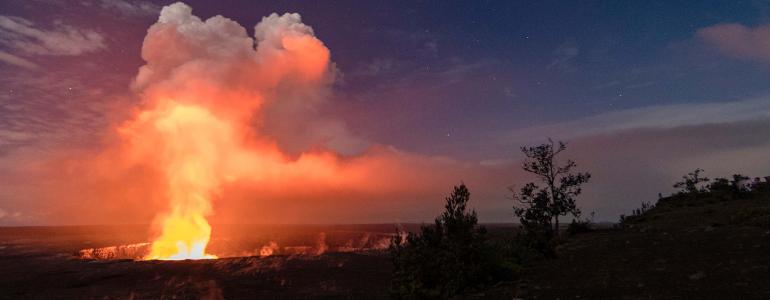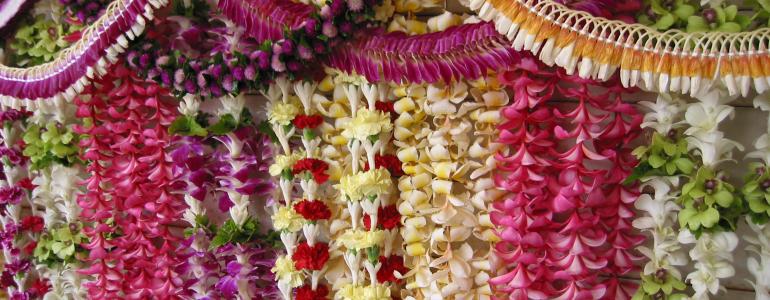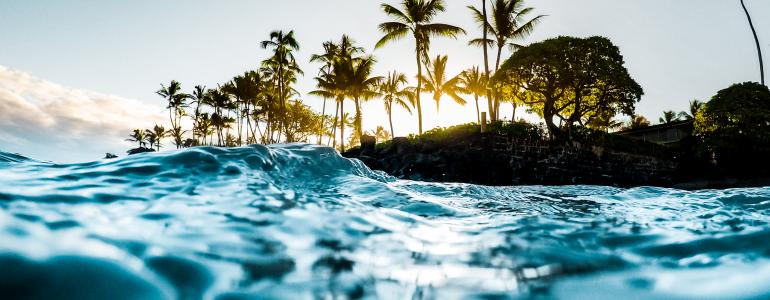Hawaii Visitor Safety Guidelines
The Hawaiian Islands are known for their romantic beaches, warm weather, and fun ocean activities.
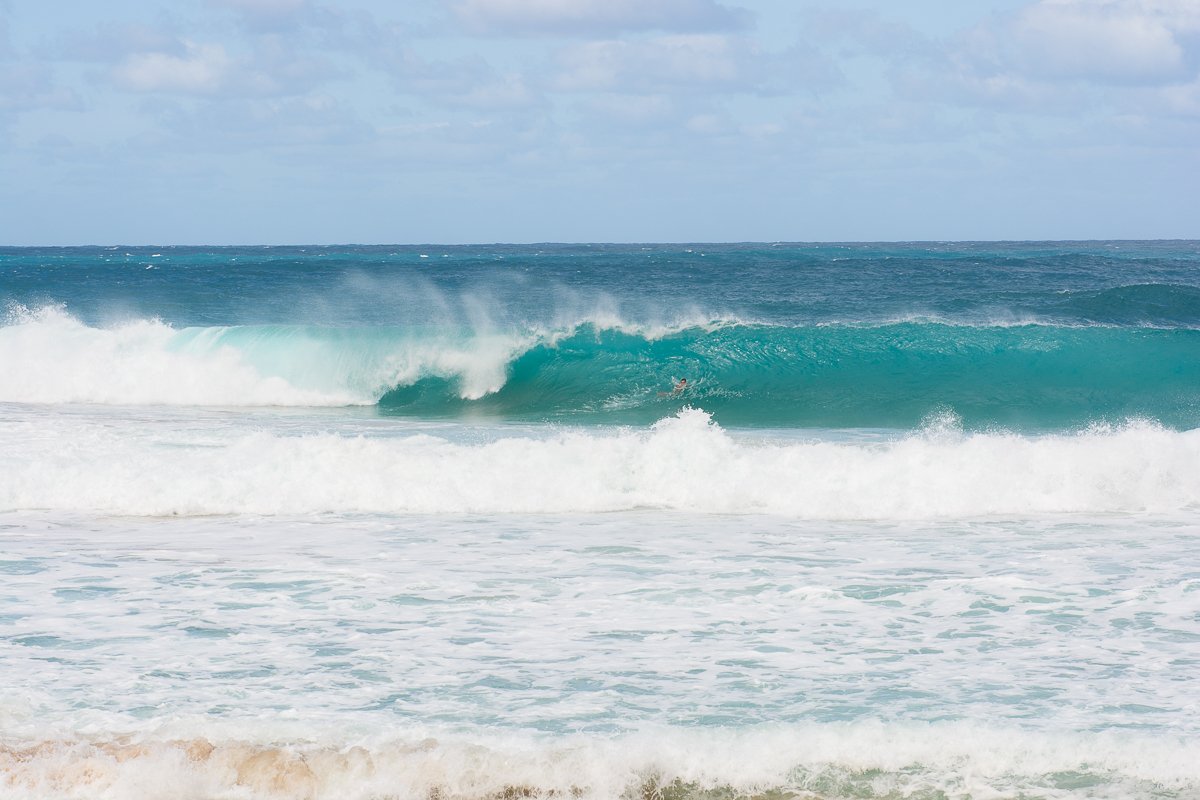
Although the Islands' beauty and charm are inviting, it is important to remember that Hawaii's ocean waters and mountains are both wilderness environments. As such, visitors should always take appropriate precautions before hiking the rugged valleys and mountains or visiting the beaches of the Hawaiian Islands.
Hawaii stays pretty warm throughout the year, although there are environments where you may experience a dramatic change in the temperature. Climate changes on the Islands will vary depending on the island you visit, the location and elevation, and the time of year. As a rule of thumb, eastern or Windward coasts tend to be more rainy, while southern and western sides are more dry.
Generally, summer tends to be very dry with warm temperatures, while winter days are peppered with light showers and sometimes high winds.
Here are six hazards to look out for on a visit to the Hawaiian Islands.
Hawaiian Waves
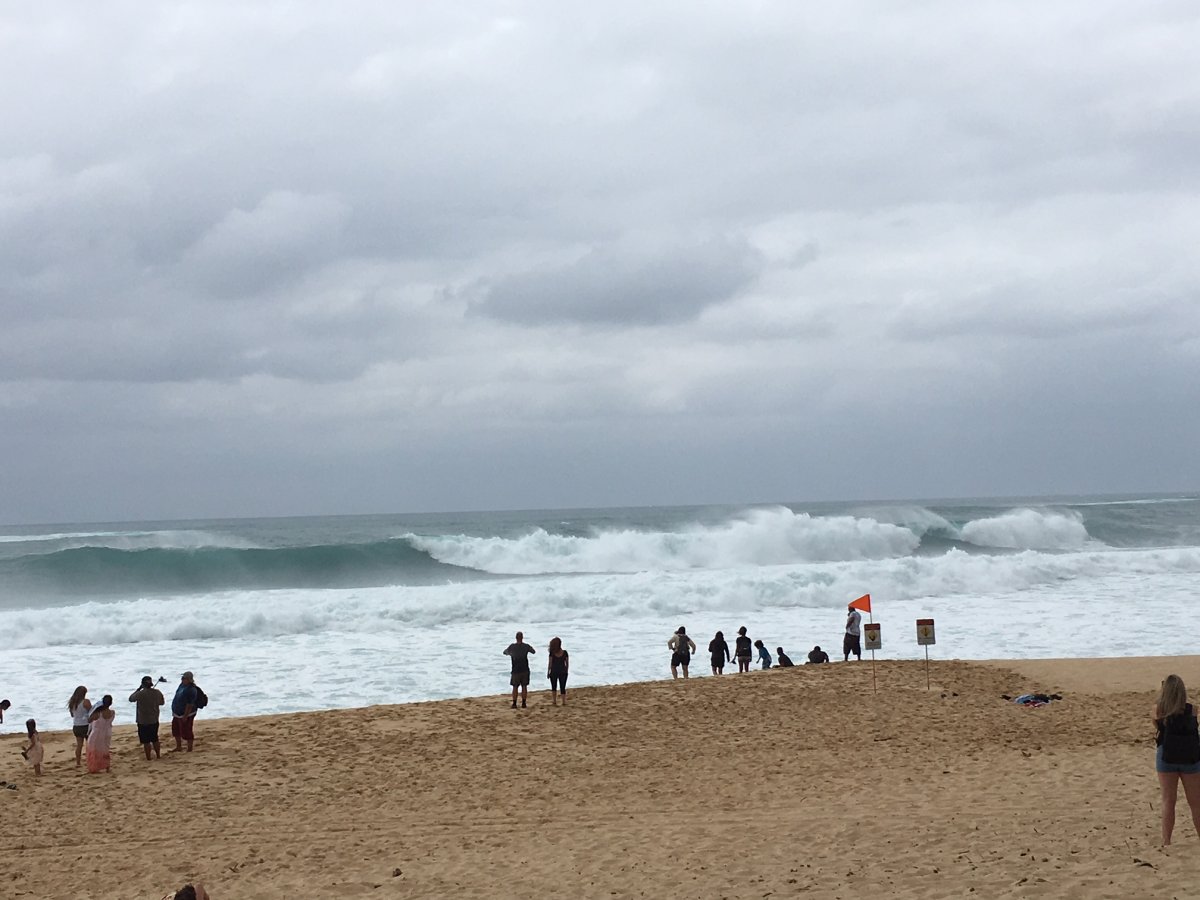
Never turn your back on ocean waves. The ocean may look calm for a moment, but remember that there might be a wave on its way, especially in Hawaii. Always play facing the waves to avoid any surprise sets and injuries.
A Note on Hawaii's Famous Waves. During the summer season, ocean conditions vary depending on the location of the island. The nature of the surf on each shore depends very much on the weather events happening thousands of miles away. Storms in the North Pacific generate the famous North Shore waves during winter, while summer swells arrive on South Shore beaches from the winter storms in the Southern Hemisphere.
During the summer, north shore beaches usually have calm waters and small waves, except for those areas exposed to strong trade winds. Conversely, east and south shore swells can be large and rough with strong trade winds—these areas are typically good for surfing and windsurfing. A good example is Diamond Head Beach Park on the south shore of Oahu, which can always sport high surf beyond the reef.
Currents in Hawaii
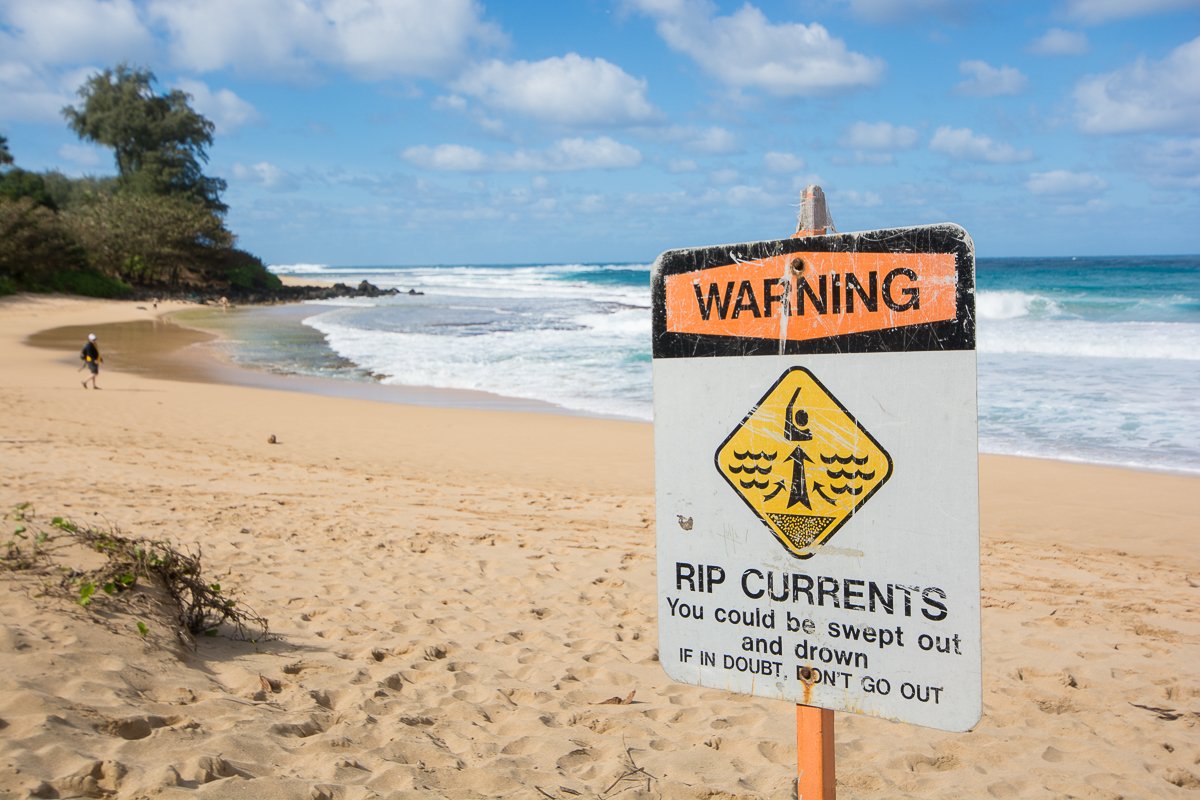
Be on the lookout for posted ocean safety signs. Posted signs are there to help protect and warn you of hazardous conditions in the area. Some signs are permanent, while others are posted daily, depending on the beach and the conditions. If you are unsure about the sign or beach conditions, it is best to avoid the area or find the nearest lifeguard stand – this leads to the next point.
Do not swim when there are no lifeguards on duty. You may be a strong swimmer, but even the best swimmer in the world won't be a match for Hawaii's ocean currents and random weather changes; there need not be big waves for there to be dangerous currents. It is always best to watch your children and avoid the shores when no lifeguard is in sight or on duty.
The lifeguards are there to ensure everyone's safety on the beach. It's best to use the buddy system when entering the water, regardless of how dangerous the current conditions are. If there is an emergency and you need lifeguard assistance, raise your hands above your head to get the attention of a nearby lifeguard and other swimmers or beachgoers.
Hawaii Coral Reefs
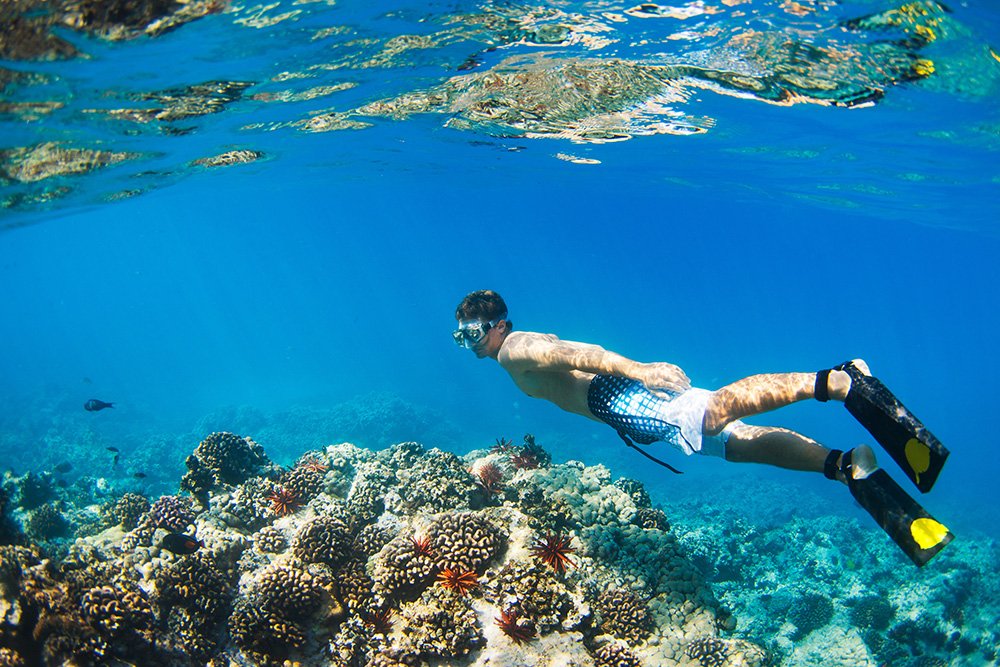
It is important to respect and enjoy the colorful coral reefs. Snorkeling is one of the top ocean activities in the Hawaiian Islands; you should understand how to interact with your surroundings while enjoying this natural wonder. Coral has sharp edges that can easily cut skin. Although it may look and feel rock-like and cut easily, it is also fragile. Therefore, it's important not to stand on or touch coral so that you do not damage the fragile ecosystem.
In addition, most of the coral reefs have urchins and eels that may be hiding in small nooks and crannies. Sea urchins have sharp, poisonous needles. If you cut yourself on a sharp reef or are exposed to a sea urchin, quickly exit the water to carefully address the wound and disinfect the area to prevent infections.
TIP: To protect toes and feet from cuts and bruises when walking on rocky shorelines in Hawaii or at home, purchase an inexpensive pair of water or "reef" shoes.
Jellyfish in Hawaii
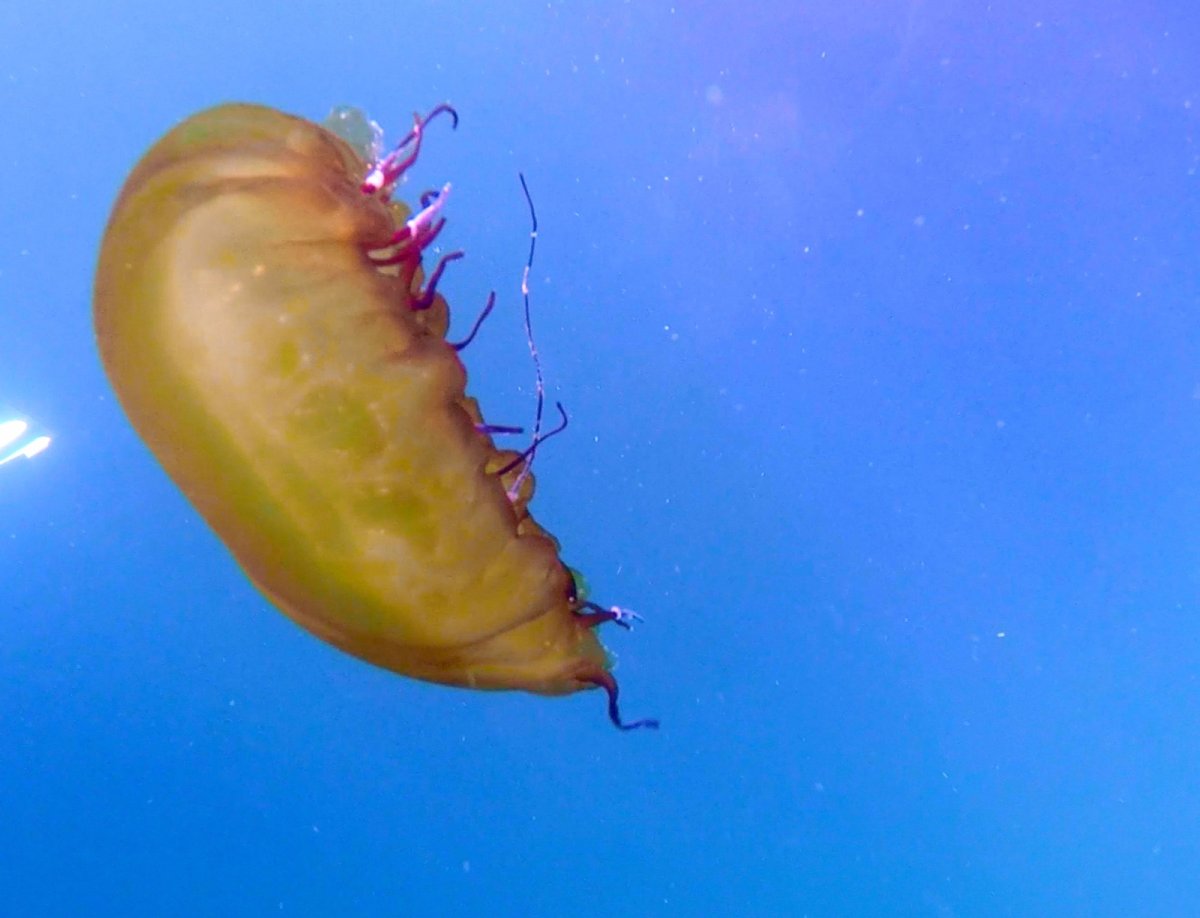
Keep a lookout for jellyfish! Each month, about 8-12 days after every full moon, Hawaii receives a visit from the Box jelly. This invasion can last a few days.
The box jellyfish is commonly found on the south shore beaches of Oahu, including Waikiki. It looks like a milky-colored plastic bag (note that the jelly pictured above is not a Box). The box jelly's body can range from one to three inches long, with tentacles up to two feet long.
While the Hawaii Box delivers a less potent sting than box jellies found in other parts of the world, like Australia, it can still inflict a significant sting, leading to shock in those sensitive to the venom.
Truth Story: an Exotic Estates staff member was stung while surfing off Waikiki and luckily paddled in before going into shock.
The good news is that while these stings can be painful and scary, Hawaii, unlike other tropical destinations, has US-standard urgent care locations often within close proximity to the popular beaches where these stings can occur, so treatment is never too far off.
Beware of the Portuguese Man-O-War!
The Portuguese man-o'-war is not a jellyfish but a dangerous member of the Cnidarian phylum family. This sea creature is well known in Hawaii due to its common sightings and painful stings. The Portuguese man-o-war often looks like either a blue or a purple bubble and can have tentacles that are up to 30 feet long.
The difference between the Portuguese man-o-war and the box jellyfish is that the man-o-war cannot swim but instead uses its bubble as a sail to float across the water using the wind. It is often difficult to spot a man-o-war in the water; under most conditions, this sea creature usually gets pushed onto the beach by the ocean currents or wind, so be on the lookout for posted signs.
On Oahu, the beaches typically impacted by jellyfish include Waikiki, Ala Moana Beach Park, Haunama Bay, Queens Beach, near Diamond Head, and the Waianae Coast. Poipu Beach on Kauai is also affected, and you will typically see posted warnings after a full moon has passed. Maui and Big Island beaches may also be impacted on occasion.
Hawaiian Sunshine
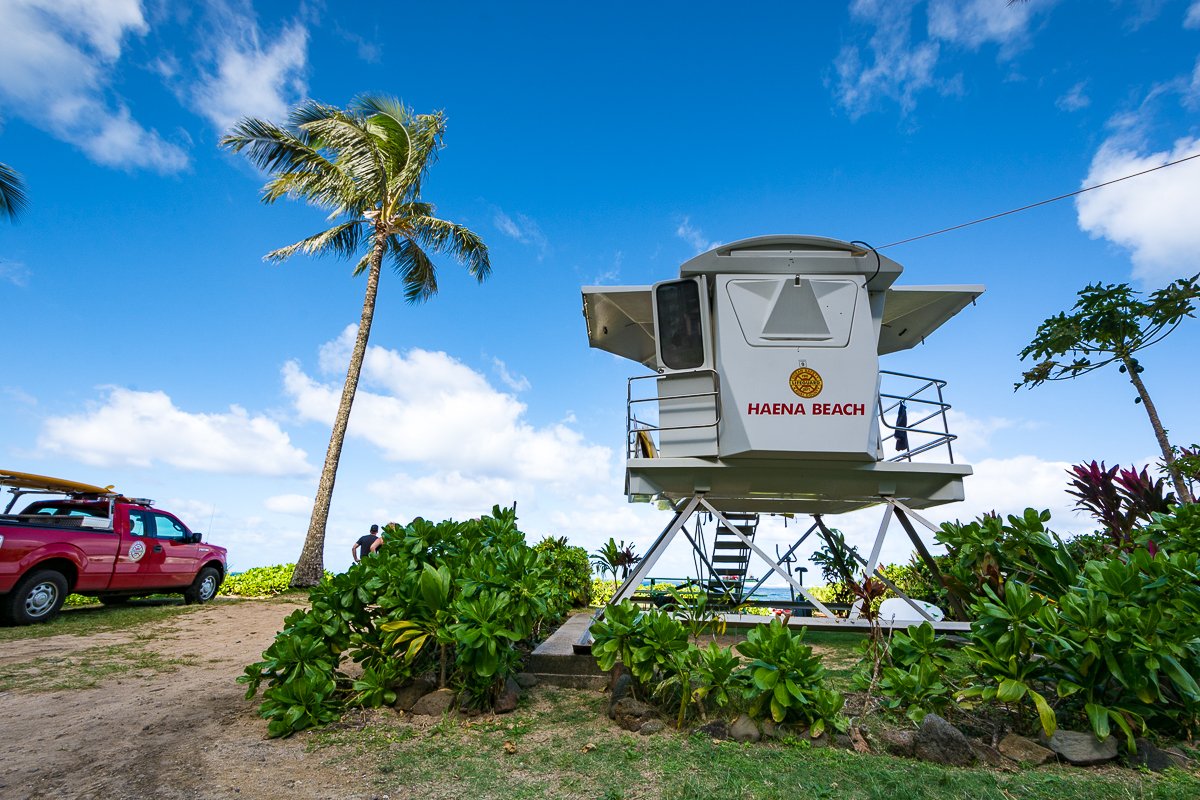
The ocean is not the only hazard in Hawaii. Gratefully, the Hawaiian Islands receive more sunlight than many other places on the U.S. Mainland, making it easier to get a vacation-ruining sunburn.
It is generally recommended to use 30 to 100 SPF sunscreen to avoid the sun's harmful rays. Remember to reapply sunscreen every two hours and every time you exit the water. If you do not reapply, you will have a higher chance of getting an unwanted sunburn during your vacation.
Tip: Avoid tanning from 11 a.m. – 2 p.m. or when you are under 'short shadow.' The sun's rays are the most intense during this time, and a burn can be uncomfortable and even make you quite ill. If you or your friends and family get sunburned during your stay, try applying natural aloe to the burn.
Mountain Hazards in Hawaii
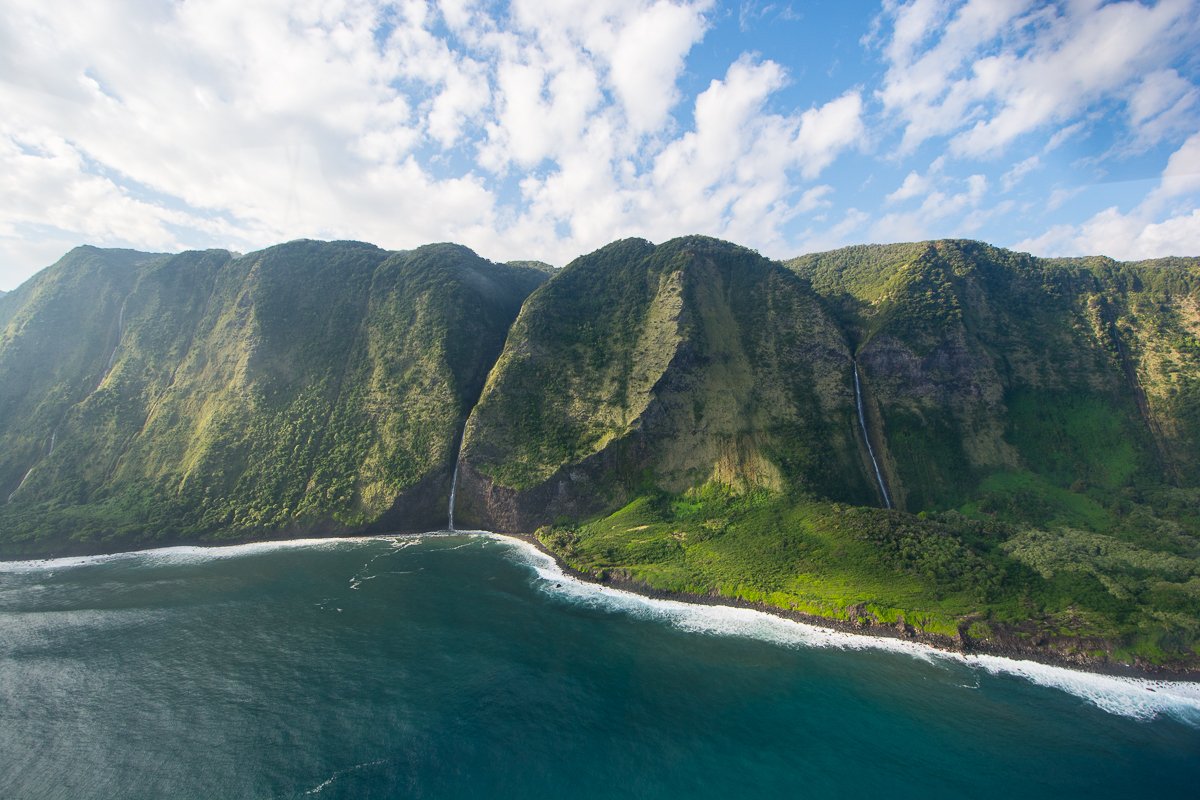
Hawaii's majestic mountains are just as much a part of its beauty as the blue Pacific. If you decide to explore the valleys and mountains of Hawaii, take caution when hiking, as the terrain is steep, often slippery, and rocks may be loose.
When hiking anywhere, always have a map and stay on designated trails - better yet, work with a guide! There are plenty of experienced guides on each island who can safely lead you on treks that match your interests and abilities.
If a sign is posted at a trailhead indicating that the trail is closed, find another to explore, as this often means that the rocks and ground are unstable and someone has already been injured.
Also, check the weather prior to setting out, as conditions can change quickly and dramatically, especially with heavy downpours in higher elevations. Clearly, avoid hiking under bad weather conditions, and do not hike alone. Always tell someone where you are going and watch for caution signs for your safety.
When on a serious hike in Hawaii as elsewhere, it is recommended to pack essential gear: proper footwear depending on the terrain, a backpack to hold your gear, water, a cellular device, a flashlight, extra batteries or portable chargers, sunscreen, hat, rain jacket, first aid kit, extra food, trekking poles, whistle, a mirror for signaling, and always carry a map. When in doubt, do not hike.
For Exotic Estates' guests, if you have any questions or concerns throughout your stay on the Hawaiian Islands, our trusted local Villa Specialists and local Concierge are here to help.
STAY INFORMED: Before going to the beach or on a hike in Hawaii, check the Hawaii Parks and Recreation website. It has links to all islands and alerts on hazards, closed parks, due fees, and reservations forms.
Whether you are looking for fun activities, advice, or suggestions - we are here to ensure that your vacation in Hawaii is fun and memorable!

